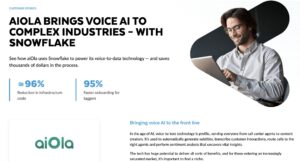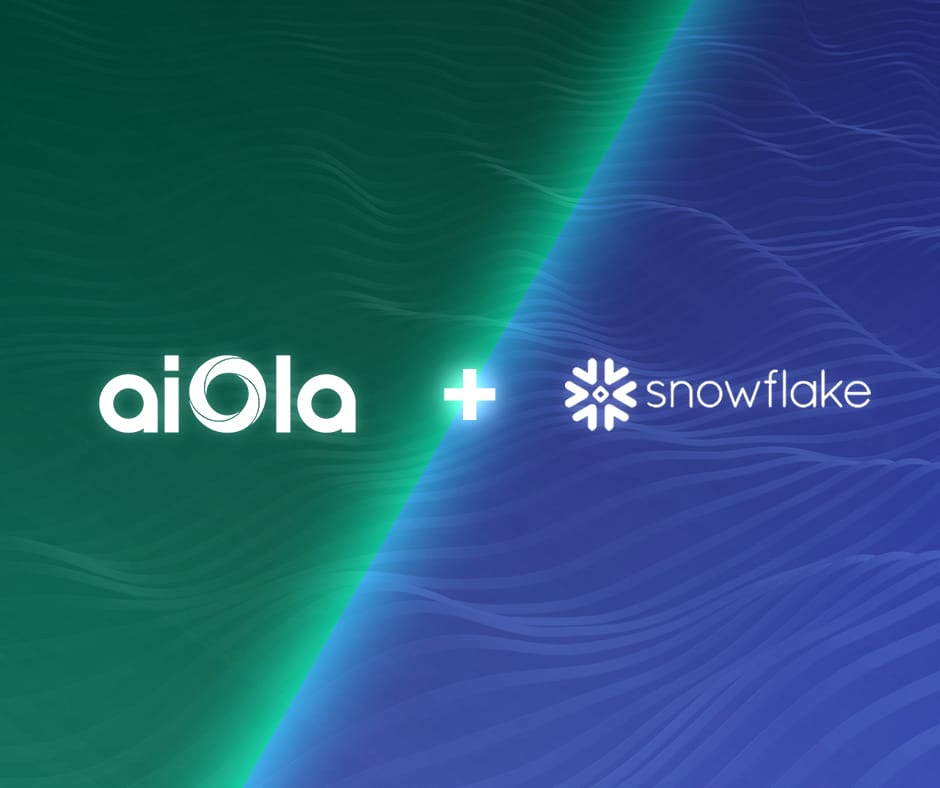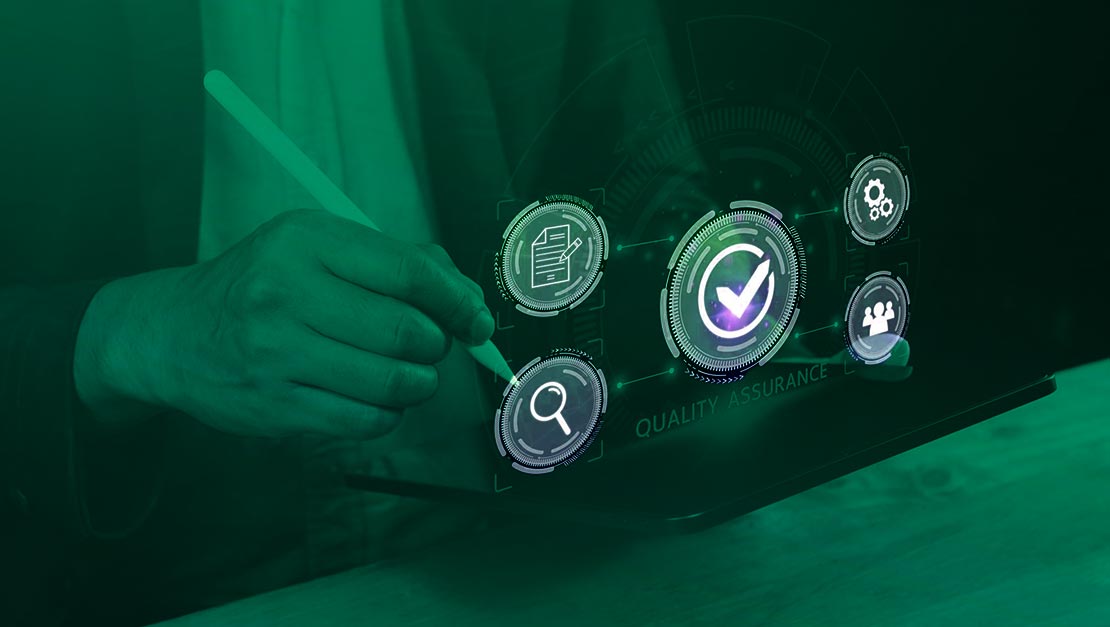Around the world, voice-to-text technology is ubiquitous in professional and personal settings. But, not all voice technology operates at the same level. At aiOla, we’re making sure to meet the needs of enterprise customers who seek efficient, voice-led workflows. But voice-led workflow completion alone no longer cuts it– data-driven insights at the speed of conversation is what businesses seek and need. We’ve made it possible through our partnership with Snowflake.
To truly understand the depth and reach of aiOla’s conversational AI features and deep technology, let’s see how Snowflake and aiOla work together to achieve scalability, governance, security, and speed that is unmatched in the current AI landscape.

What is Snowflake?
First things first, meet Snowflake. The Snowflake platform delivers a unified platform for enterprise data and AI. It centralizes data, grants role-based access, enables discovery, and is interoperable.
In a practical sense, Snowflake has enabled aiOla to support its enterprise customers’ data in a new and improved way– by transforming real-world audio (unstructured, messy, fast) into actionable data at scale.
Need for Speed: Uncovering Insights from Data
aiOla’s conversational AI makes it possible for companies across industries to complete workflows using speech. Across mission-critical industries, including aviation, logistics, manufacturing, and maintenance, aiOla stands out because of its ability to function with accuracy, despite noisy and challenging environments.
The type of background noise that would stop most voice AI technologies in its tracks is what makes aiOla shine. aiOla serves niche markets because it can understand industry-specific jargon, in any acoustic setting, in over 120 languages.
At the heart of these differentiators lies the upsides of what aiOla can do with data. In order to make speech-led workflows seamless, aiOla has to be able to capture, structure, and validate massive amounts of data in real-time. In the past, aiOla did this using its own legacy data infrastructure, but it couldn’t fully keep up with the demand of its Fortune 500 roster of clientele. Not only was the requirement tedious and challenged, but it was also expensive. According to Data Engineering Team Lead, Tamir Hes, “Each environment was costing us more than $4,000 a month, and we had numerous environments.” Additionally, manual effort was required.
To overcome these costly and inefficient hurdles, aiOla migrated to Snowflake’s AI Data Cloud in 2024 with the goal to be able to support companies with the fastest speeds, scalability, and ease of use. Just after about a month of use, aiOla reaped plenty of benefits for itself and its clients.
Now, unstructured audio data flows into Snowflake, where it moves through Dynamic Tables that automatically prepare it for use. After that, the data is sent to the Insight Center service, allowing customers to configure customizable reports or specific actions based on what they are looking to understand from the data.
With this foundation and partnership, aiOla supports its customers with unparalleled functionality and capabilities, including:
- Access to rapid insights
- A quick and powerful tagging tool
- Automatic insights at the speed of conversation (removing the need for hours of manual reporting)
Tag, You’re It: Diving Deeper with Data
To make the most out of voice data, tagging is a necessity. Tagging is equivalent to categorization, which in the realm of conversations enables context, information, and analysis. With tagging, users of conversational AI can deduce sentiments, intent, and ultimately, customer needs.
Tagging is made possible in a two-step process with aiOla. First, automatic speech recognition (ASR) assigns tasks and labels to audio recordings. Then, the tagging gets more granular as the audio moves through the large language model (LLM). This is where speech turns into action. For example, the LLM stage is where forms can be filled out using audio from calls.
Before Snowflake, aiOla was stuck building its own tagging user interface using Kubernetes. With Snowflake, the tagging system is built on Streamlit. The result? Immense simplification for aiOla and its users! aiOla can grant customers user accounts on Streamlit, which has cut a previously two hour onboarding process for taggers to just five or ten minutes. That’s a 95% time saving.
Additionally and importantly, this tagging system from Snowflake supports encryption, so that aiOla’s customers’ data remains secure. Data is stored in a binary format that can be reverted back into audio using Streamlit.
So, What’s Next?
With all of these advantages developed through the Snowflake and aiOla partnership, you may be wondering, “What’s next?”
Moving forward, aiOla is focused on expanding further functionality using Snowflake’s platform. aiOla is planning to build a Snowflake Native App so that customers can download it through the Snowflake marketplace. Furthermore, aiOla aims to move some of its data science workloads to Snowflake, with the goal to build a Data Agent using Cortex AI. Doing so would enable users to uncover insights using natural language.
Hes shares that the Data Agent would provide executives to ask questions directly of data, rather than having to work with dashboards. Imagine an entirely conversational approach to gathering insights from data, directly from the data itself.
In Hes’ words, the Snowflake x aiOla partnership is successful as Snowflake is “serving as the foundation of our AI-native stack and empowering users to explore data independently.”







